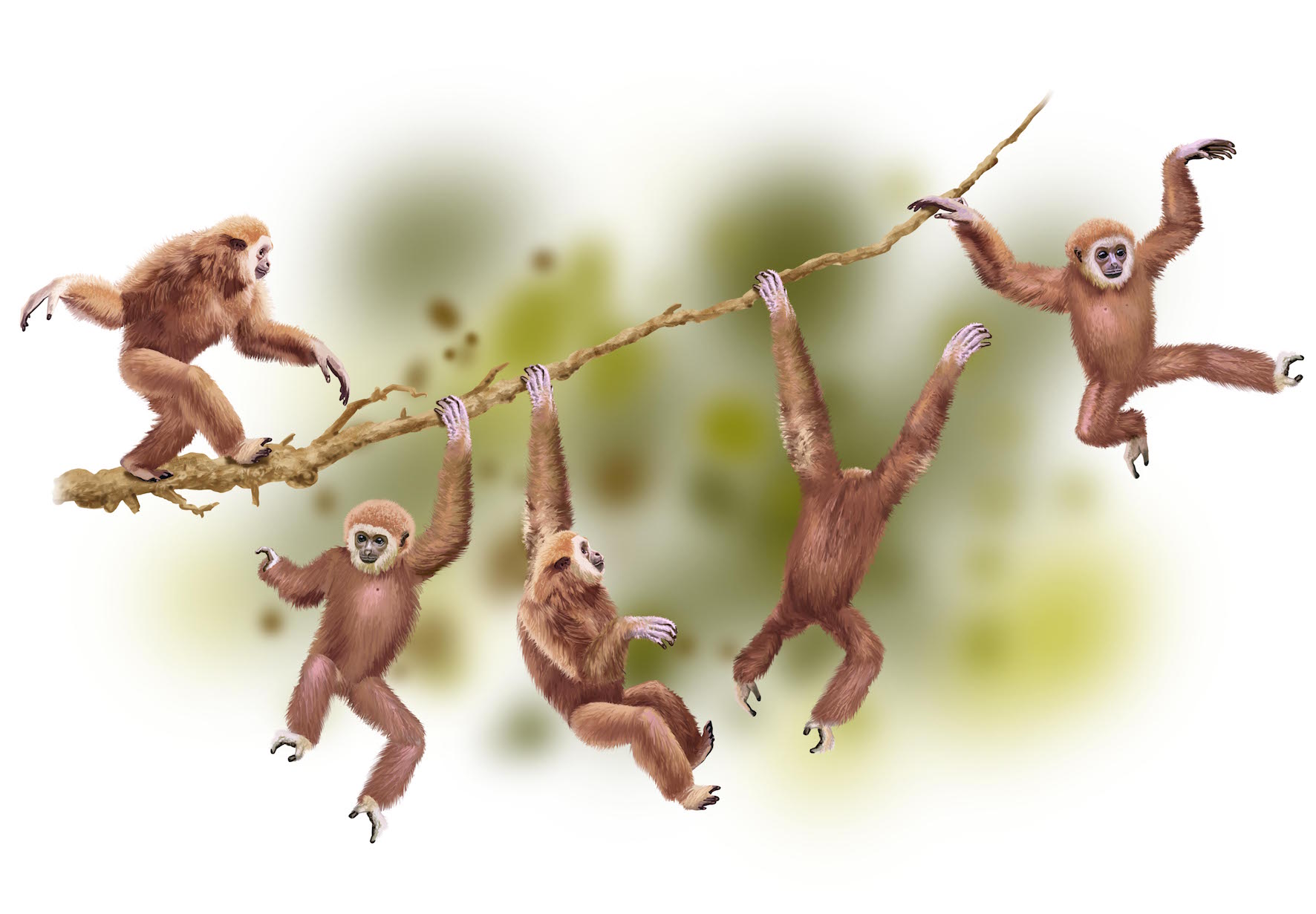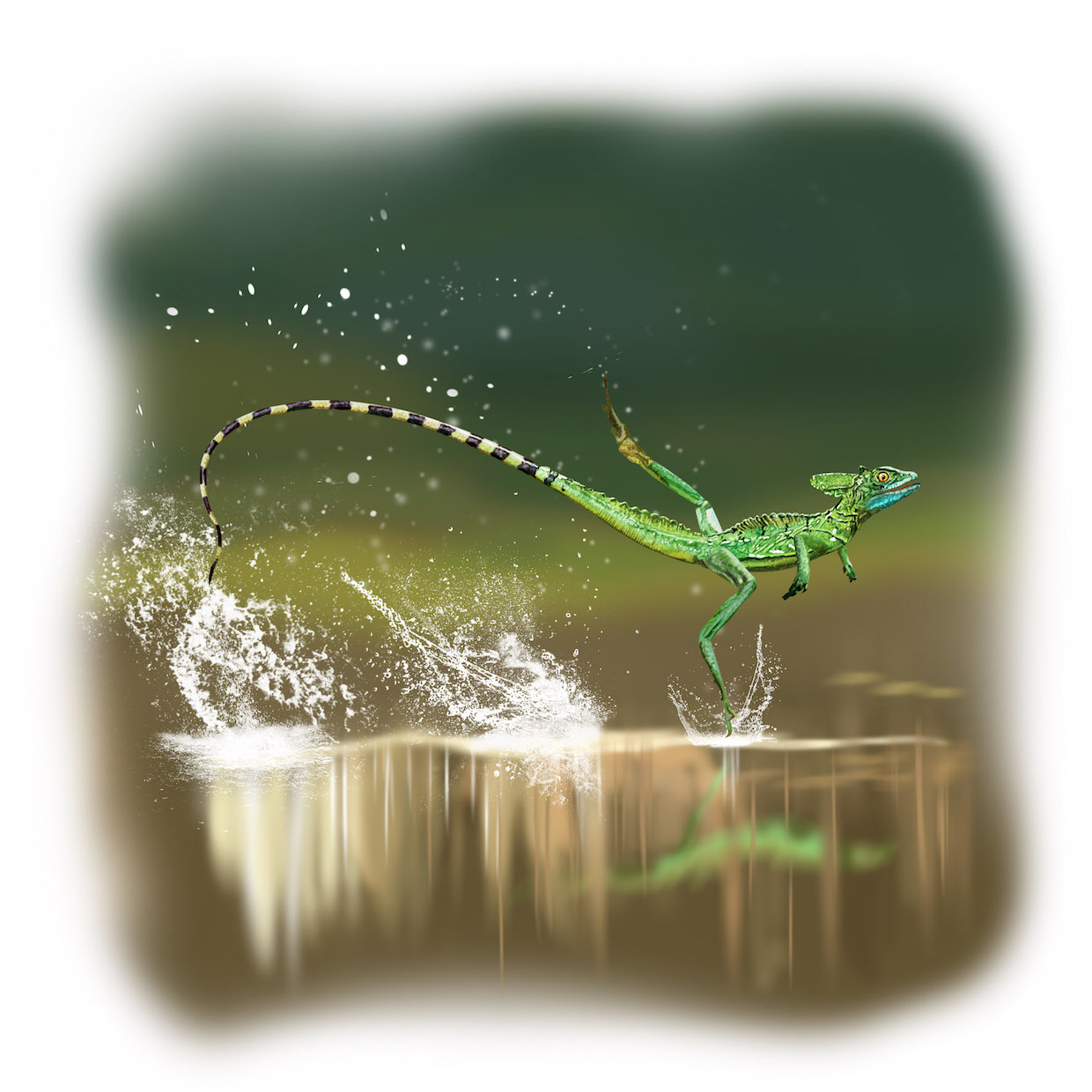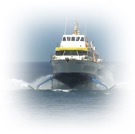How to travel if the conditions are challening?
In this blog we will discuss what solutions from living nature are available if we want to move fast but all around is shaky and wobbly and nothing to lean on? Is it possible at all? – Yes, that is possible. The solution was found by monkeys and apes. When branches are too thin they they go UNDER the branches,hang down and swing!



This locomotion is called brachiation: the body of an animal works as a pendulum and the springy branches accelerate the motion as an elastic springboard. Here we see the manifestation of the inventive principle No13 (“The other way round” – turn it upside down or inside out – instead of leaning ON a substrate animals go BELOW it) and No21 (“Skipping, rushing through”) – make dangerous or potentially harmful processes at high speed) and No22 (“Turn harm into benefit” – use wobbling twigs to generate extra energy for swinging).
Are there any other animals who face similar challenge? Do they use the same inventive principles? - Yes, similar challenge faces those animals who need to run fast over unstable substrate (e.g., water). To move safely through unstable medium is possible if the speed is high. Look at Jesus Christ lizard – walking on water surface is even more difficult challenge than walking along the wobbly branch. The model of monkey’s and lizard’s challenges is the same – the need of turning wobbly things into “solid”. And Jesus Christ lizard uses the same inventive principles as monkeys – No13 (“The other way round” – instead of swimming, going IN water, running OVER water), No21 (“Skipping, rushing through” – make dangerous or potentially harmful processes at high speed – fast push does not leave any time for sinking) and No22 (“Turn harm into benefit” – use main obstacle – unstable water – into stable surface to lean on).
What we can learn from monkeys if we want to travel through unstable medium with high speed?
Swinging is not the lesson we would appreciate as we do not live in the crowns of trees in our days! But inventive principle they use we could borrow to address similar type of challenge – moving through unstable medium with high speed by turning wobbly things into “solid” and stable ones. In other words we need to learn how to turn an obstacle into the resource! What unstable media are around us? – Water and air. Boats sail on water, but still there is serious limit to speed, which is imposed by the resistance of water. On the other hand, resistance of water is important – it holds the boat floating. Can we defy the resistance of water to increase speed? Such challenge contains contradicting requirements – we need resistance of water and we do not need it. Challenges of such type are called inventive ones and require inventive approach to achieve win-win solution. The model of this challenge is turning unstable/wobbly things into “solid” and stable, so we can borrow models of inventive solutions from monkeys and Jesus Christ lizard.
The higher speed of a boat, the higher the drag… To use the drag to help increasing the speed we may think of lifting the boat’s hull above water and “lean” on it like Jesus Christ lizard does… But water is not solid (if it is ice, the problem disappears) and the boat is incomparably heavier than a lizard. In this case the inventive principles, which we learned from monkeys may help – No13 (“The other way round” – turn it upside down or inside out – instead of submerging our boat INTO water go ABOVE it) and No21 (“Skipping, rushing through” – make dangerous or potentially harmful processes at high speed – the hydrofoil vessel, which you see on the picture is in constant “jump” above the water). Hydrofoil boat also uses inventive principle No22 (“Turn harm into benefit”). High speed of a vessel combined with the submerged wing (hydrofoil) creates the required effect – a boat’s hull is lifted above water surface and drag nearly disappears. The same principles are used by water-skiing and power-boats – hydrogliders.
It is incredible – regardless to scaling effect (radically different of a lizard’s and boat’s sizes), inventive principles directed engineers and lizards to the same right solution.

 Posted by
Posted by


Enter the code in the box below: